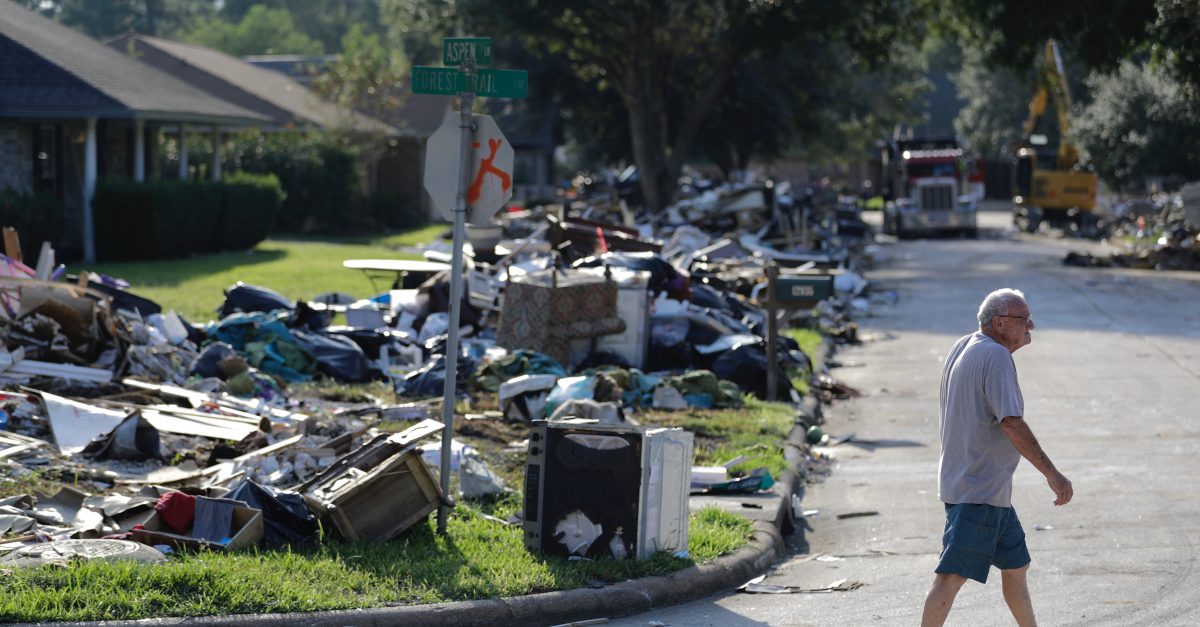A professor at Texas A&M University wrote an article about how the floods from Hurricane Harvey can be a “teachable moment” for Houston and how the aftermath of the storm can lead to a “healthy city.” John S. Jacob wrote the piece for Watershed Texas, the blog for the Texas Coastal Watershed Program, a program designed to study the state’s watershed and wetlands habitats.
Videos by Rare
Jacob’s article describes how changes in Houston’s urban planning and development practices can both reduce the risk of future catastrophic floods, and combat the urban sprawl that causes most Houstonians to spend more time in their cars than residents of nearly any other American city.
RELATED: Should Homes In Houston’s Flood Plains Be Razed Or Rebuilt?
Jacob proposes that the city “reclaim” the floodplains and move residents out of high-risk areas.
“We agonize over how to stop the bleeding, but it is pretty straightforward—get people out of harm’s way,” Jacob writes. “With that as our standard, we would have very few impacts in future Harvey’s.”
He also encouraged more compact design of developments, such as town homes, rather than sprawling suburban homes that require more land in flood-prone areas. He writes that a more compact design would create spontaneous interaction among community members, rather than the isolation and sprawl created by suburban gated communities.
“Solitary travel to work and back does not encourage interaction, “ Jacob writes. “Gated communities do not encourage interaction. Car-only access to places of work, shopping, worship, or play does not encourage interaction. Sterile streets with empty walls—no doors, no windows, no shops — do not encourage interaction.”
RELATED: Texas Water Development Board Implementing Statewide Flood Plan
Jacob also encouraged developers to stay out of the flood plans, where land is cheaper in the short run, and build on higher elevations to mitigate flood damage.
“A healthy and resilient city builds on higher ground,” Jacob writes, “the literal higher ground that does not flood and the metaphorical higher ground built on a civic architecture of interaction.
“Let’s get out of the floodplains and build a Houston for the centuries.”
[anvplayer video=”4186672″]



